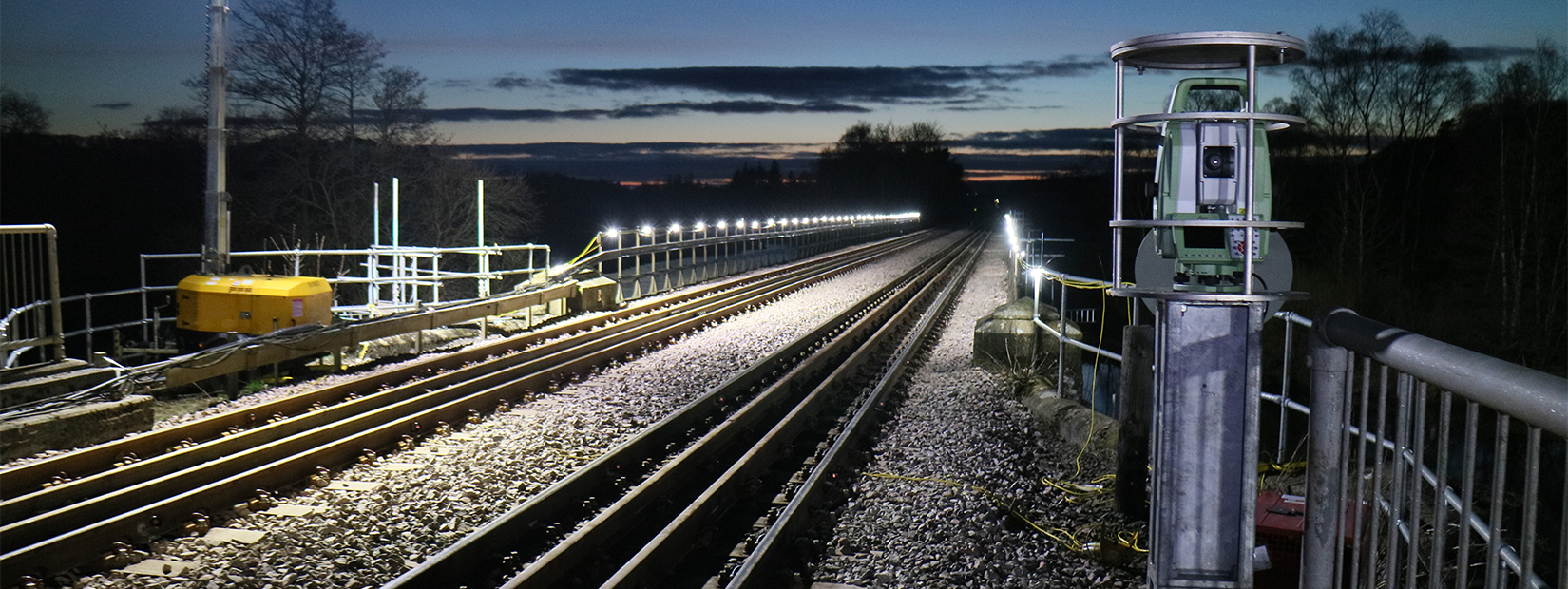Whether it’s scheduled track maintenance or a major infrastructure upgrade, contractors can face a number of challenges unique to the rail industry.
Here, we delve into the detail of temporary works design for the rail sector, exploring the clear need for speed, safety and reliability.
Speed & Safety
At the forefront, is the need for safety. Our railways can be dangerous places to work, from uneven surfaces to live running rails and the proximity to high-speed rail services. Keeping site teams safe is non-negotiable.
Speed and efficiency are also critical, with projects often having extreme time constraints and pre-agreed possession windows, which aren’t always the same as the work window. First, comprehensive site safety briefings must be carried out and the track in question may often need to be surveyed – both before and after work has been completed – before the track can be handed back over to Network Rail upon completion. All of this makes the window of opportunity for the work itself even shorter. Possession periods are also famously expensive.
As a result, it’s vital that any equipment required for maintenance or upgrade works is deployed promptly, is right first time and then able to be removed quickly.
Temporary Works
Temporary works can also be described as enabling works, needed to facilitate the construction of the permanent or to enable other works to be carried out safely and efficiently. Despite this, temporary works can still often be seen as an ‘add-on’, brought in at a later stage of a project.
We regularly see the value of early engagement, where temporary works are considered at an earlier stage of the project sequence. This approach is perhaps especially critical within the rail sector. While not always possible on reactive and emergency projects, for planned maintenance and upgrades it can be invaluable. It’s all about opening up conversations and considering both the temporary and the permanent in conjunction. By doing so, you can work collaboratively on finding the optimum solution for the project and for the site. Often, the initial solution may not always be the best choice, with other design avenues to explore that could save time, cost or improve productivity on site. When you have time to discuss, explore and collaborate, the end-result is always far better for everyone.
Robust & Reliable
Let us take a common maintenance project as an example: repairing or replacing utilities (such as drainage) around the track. These will require shallow trenches to be excavated, usually up to two metres in depth. As with any groundworks project, shoring equipment is essential to make the trench safe for site teams to access.
Around 80% of the groundworks equipment we supply to the rail sector is lightweight shoring. This goes back to the two clear priorities: speed and safety. As its name suggests, lightweight shoring equipment is easy to handle, manoeuvre and install. Most solutions can be installed either by hand or by RRVs, negating the need for large plant machinery. This is essential, as getting large equipment trackside can be a challenge, especially when you consider that our UK rail network runs through some of the most rural and remote parts of the country.
Due to the extreme time constraints, site teams simply cannot afford any downtime with the equipment. The temporary works design must be robust, and the equipment must be reliable. Within the rail sector, every project is different and hazards can vary, from embankment heights to live services and other structures.
It’s essential that you have confidence in the temporary works design and trust that it will be constructible on site, taking all hazards and site constraints into account.
Let’s talk money
While cost is a factor for consideration, it is clear that safety comes first. Given the expense of the possession window, any cost savings achieved can be easily undone if there are issues with the temporary works design or equipment – especially when those issues lead to project delays. Instead, the focus is (rightly so) on getting it right first time.
Taking all of this into account, the value of collaborating with an experienced temporary works supplier is clear, providing you with the assurance that works can be completed safely, correctly and efficiently – without snags.
At Mabey Hire, we’re a trusted temporary works partner to the rail industry. We’re committed to product innovation, regularly improving and expanding our product portfolio, including lightweight shoring equipment. Our dedicated engineering team uses the latest digital technology and BIM modelling to ensure a design is constructible in the 3D environment before you reach site. What’s more, with 16 depots around the country, you can be sure that our expertise isn’t too far away.
